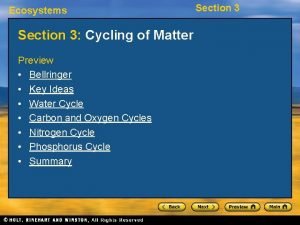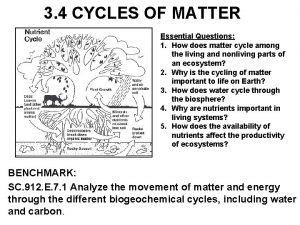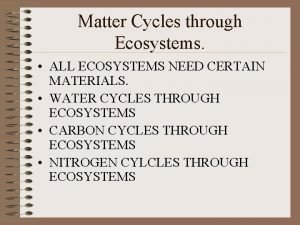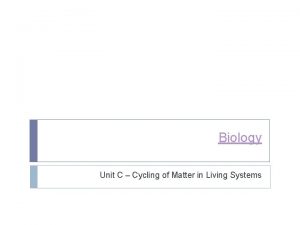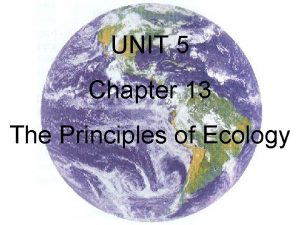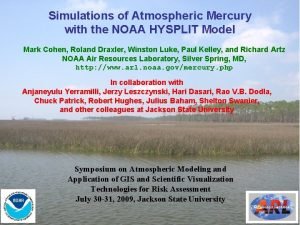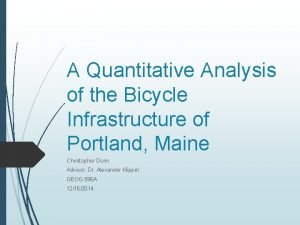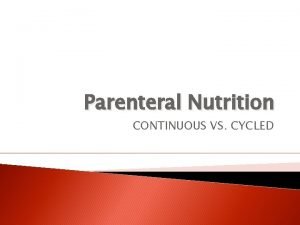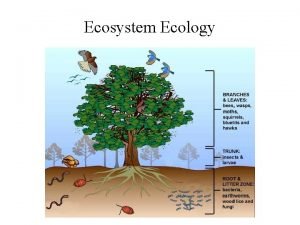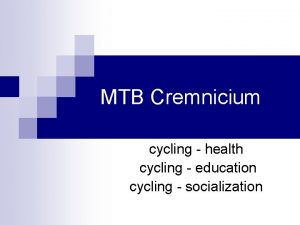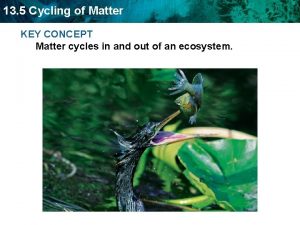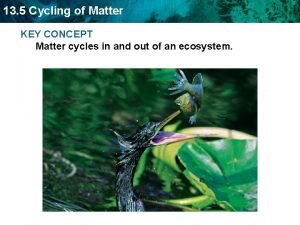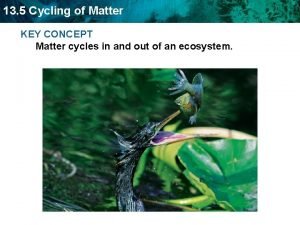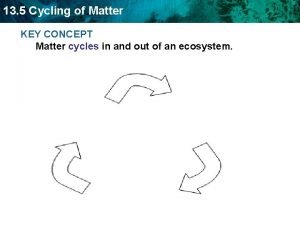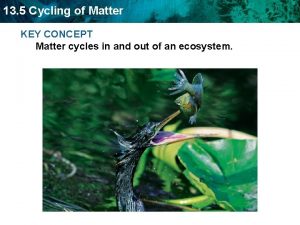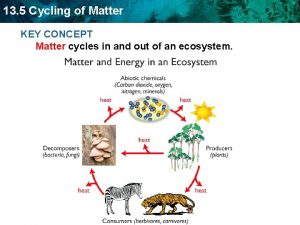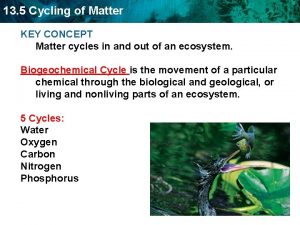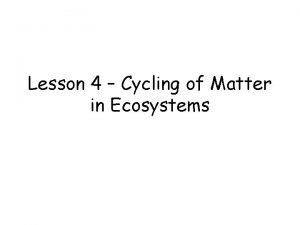13 5 Cycling of Matter KEY CONCEPT Matter















- Slides: 15

13. 5 Cycling of Matter KEY CONCEPT Matter cycles in and out of an ecosystem.

Nutrient Cycles Cycling maintains homeostasis (balance) in the environment. • 5 cycles to investigate: 1. Water cycle 2. Carbon cycle 3. Nitrogen cycle 4. Oxygen 5. Phosphorus

Water cycle • The hydrologic, or water, cycle is the circular pathway of water on Earth. • Organisms all have bodies made mostly of water. • Includes the following • Evaporation, transpiration, condensation, precipitation

Water cycle``` http: //www. youtube. com/watch? v=0_c 0 Zz. Zf. C 8 c

Carbon cycle- • Photosynthesis and respiration cycle carbon and oxygen through the environment.

Carbon http: //www. youtube. com/watch? v=0 Vwa 6 qt. Eih 8 cycle http: //www. sciencelearn. org. nz/Contexts/The-Ocean-in-Action/Sci-Media/Animations-and-Interactives/Carbon-cycle http: //www. windows 2 universe. org/earth/climate/carbon_cycle. html

Nitrogen cycle. Atmospheric nitrogen (N 2) makes up nearly 78%-80% of air. Organisms can not use it in that form. Lightning and bacteria convert nitrogen into usable forms.

Nitrogen cycle. Only in certain bacteria and industrial technologies can fix nitrogen. Nitrogen fixation-convert atmospheric nitrogen (N 2) into ammonium (NH 4+) which can be used to make organic compounds like amino acids. N 2 NH 4+

Nitrogen cycle. Nitrogen-fixing bacteria: Some live in a symbiotic relationship with plants of the legume family (e. g. , soybeans, clover, peanuts).

Nitrogen cycle- http: //www. youtube. com/watch? v=w 03 i. O_Yu 9 Xw&feature=related • Some nitrogen-fixing bacteria live free in the soil. • Nitrogen-fixing cyanobacteria are essential to maintaining the fertility of semi-aquatic environments like rice paddies.


13. 5 Cycling of Matter Oxygen Cycle • The main processes involved in the oxygen cycle are photosynthesis and cellular respiration.

13. 5 Cycling of Matter • Oxygen cycles indirectly through an ecosystem by the cycling of other nutrients. oxygen photosynthesis respiration carbon dioxide

13. 5 Cycling of Matter • The phosphorus cycle takes place at and below ground level. (http: //www. youtube. com/watch? v=RKk. C 2 Jpja. Gc) – Phosphate is released by the weathering of rocks. – Phosphorus moves through the food web and returns to the soil during decomposition. rain geologic uplifting – Phosphorus leaches into groundwater weathering of phosphate from rocks from the soil and runoff plants is locked in sediments. animalsphosphate in solution in soil – Both mining and leaching agriculture add sedimentation phosphorus into decomposers forms new rocks the environment.

Toxins in food chains. While energy decreases as it moves up the food chain, toxins increase in potency. • This is called biological magnification Ex: DDT & Bald Eagles
 Section 3 cycling of matter answer key
Section 3 cycling of matter answer key Chapter 2 principles of ecology test answers
Chapter 2 principles of ecology test answers Matter cycle
Matter cycle Principles of ecology organisms and their relationships
Principles of ecology organisms and their relationships Matter cycling in ecosystems
Matter cycling in ecosystems Section 1 organisms and their relationships
Section 1 organisms and their relationships Cycling of matter definition biology
Cycling of matter definition biology Chapter 2 section 1 classifying matter answers
Chapter 2 section 1 classifying matter answers Chapter 4 lesson 4: metamorphic rocks answer key
Chapter 4 lesson 4: metamorphic rocks answer key Key concept builder lesson 1 what are waves answer key
Key concept builder lesson 1 what are waves answer key Biogeochemical cycling ensures that
Biogeochemical cycling ensures that Noaa hysplit
Noaa hysplit Quantitative research about cycling
Quantitative research about cycling Tpn tapering guidelines
Tpn tapering guidelines Energy flow and material cycling in ecosystem
Energy flow and material cycling in ecosystem Cycling event sponsorship proposal
Cycling event sponsorship proposal
